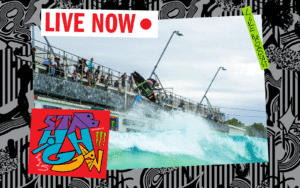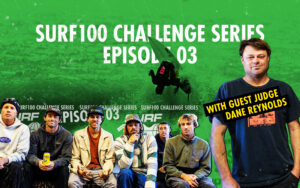How An Ordinary Wave In San Clemente Changed The Way We Surf
Thank you, T Street.
“It was fun…for T Street,” is a common utterance around San Clemente. Trestles is the town’s crown jewel, but eventually everyone ends up at T Street. And unless you’re a Gudauskas, usually the session is somewhat disappointing. It’s akin to what D-Bah is to Snapper—somewhere to surf when it’s not pumping, you’re pressed for time and you just want to get a couple quick waves.
On average T Street is very average. It’s part beachbreak, part rock reef and fairly tide sensitive. It has its moments and is typically more dependable than the pier or other sand-bottom breaks around town; still, it ain’t Lowers, Cottons, Uppers, or Church. Nevertheless, rising stars like Griffin and Crosby Colapinto, Kade Matson, Cole Houshmand and Jett Schilling, among others, are out there on the reg…or they were until they get their driver’s licenses and figured out the drop-off routine off at Lowers.
Here’s the rub on T Street, for as shitty as it is, it’s a wave that has played a role in most of our surfing lives—even if you’ve never been to America.
“It was during the summer of, either 1982 or ’83, I must have been about 10 or 11 years old,” Shane Beschen told me a few years ago for an article I did for the Surfer’s Journal. “I was surfing T Street with my good friend Dan Kennedy. The waves were fun, the sun was out, and I was totally oblivious to the fact that my perception of surfing was about to change forever. I was paddling back out after catching a wave and this guy on a fluoro green and yellow board was flying right at me. I started paddling faster to get out of his way but he was moving at a speed I’d never seen. He then whipped the most radical backside 360 in my face. Spray flew everywhere, I was momentarily blinded, left wondering if he had fallen. When I turned my head to see the outcome he was already down the line and into his next move.”
It wasn’t until Jim Hogan, who was also in the water at the time, spoke up and informed the boys who it was.
“That’s Martin Potter. He’s from South Africa and he’s staying with me for a while,” he said.
That was the exact moment T Street became relevant. Matt Archbold and Christian Fletcher would quickly take Pottz’s brash act to its logical extreme. Fletcher should be thanked for basically inventing aerial surfing. He cemented his legacy and reputation with a statement-making win at the 1989 Body Glove Surfabout (although he freely admits he won the contest with turns). Meanwhile, when Archy took his whole “built for speed” approach from T Street to Off The Wall he inspired a generation of hellions.
“He was my favorite surfer as a kid,” said Andy Irons while working on a guest editor issue of SURFER Magazine. Andy insisted a whole spread be devoted to his favorite shot of Archy at OTW. “I had Kelly posters on my wall, but Archy, he was my guy. He just didn’t give a fuck. He was radical in and out of the water. That was really attractive to me.”
The cat would never go back in the bag. T Street became a hotbed of progressive talent. When Matt Biolos and …Lost teamed up with guys like Chris Ward and Cory and Shea Lopez they ushered in the next generation of no-rules surfing. And while Lowers may have been the focal point, especially in those early …Lost videos, T Street was always quietly lurking in the background.
Then came the Gudauskas brothers, the Long brothers, Nate Yeomans, Kolohe Andino and on. How Greg Long became one of the world’s most elite big-wave surfers after growing up at T Street is still a mystery.
“For myself, those days of Potter ripping San Clemente molded my perception of what good surfing is and how I would approach my technique and career,” said Beschen. “I remember times when I was at the school lunch tables and kids would be talking about Potter surfing T-Street and I would run down there right after school, hoping to see that green and yellow board flying through my local beachbreak.”
A decade later, while in France for a contest, a young Beschen drew an ageing Pottz in an expression session heat.
“I took off on a wave and launched a frontside air 360,” says Beschen. “It was still back in the beginning stages of progressive surfing in competition and the commentators are going crazy in French. I paddled back out and Potter turned toward me and said, ‘Hey go easy on me grom.’”
“I looked at him apologetically and felt kind of embarrassed. All I could say was, ‘Sorry, but it’s kind of your fault, you’re the guy that started this whole thing.’”













Comments
Comments are a Stab Premium feature. Gotta join to talk shop.
Already a member? Sign In
Want to join? Sign Up